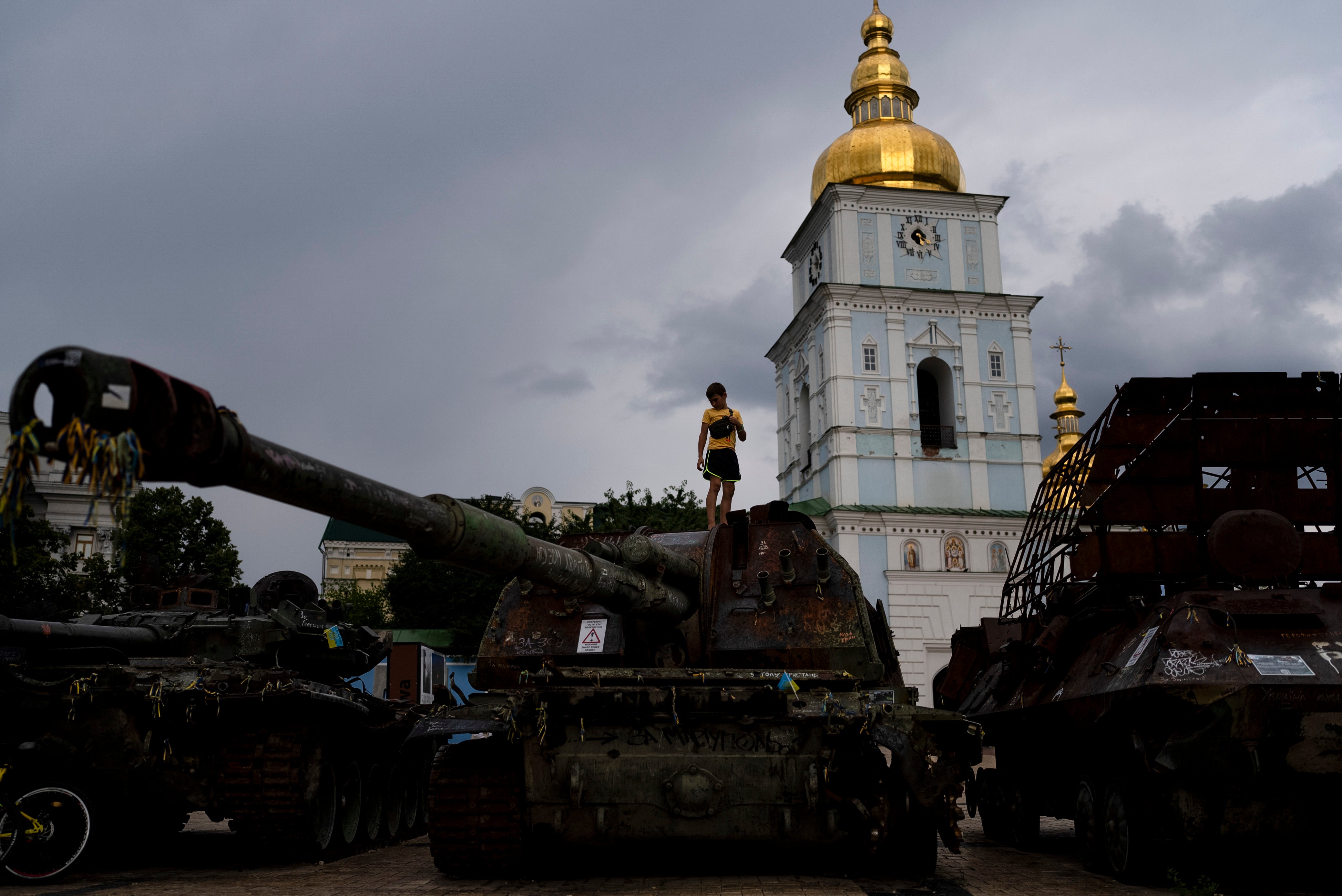Ukraine’s counteroffensive has faltered – but who is to blame?
The much-anticiptated military manoeuvre has failed to make significant gains, writes Mary Dejevsky – so how does it now take the fight to Russia?


Whatever happened to Ukraine’s spring counteroffensive? For the best part of six months, the prospect was keenly anticipated inside and outside Ukraine, as the move that would determine the course of the conflict, and – many hoped – send Russian forces packing. Now, not so much. As summer starts to give way to autumn, some basic questions about the counteroffensive hang in the air. Has it been, and gone? Did it happen at all? If it did, what was the plan? And will similar talk accompany the arrival of spring 2024?
These are not easy questions to answer, not least because the information coming from both sides is deficient. Ukraine understandably keeps its future military movements close to its chest and treats casualty figures as a state secret. Reports from Russia are either blocked in much of the West or widely distrusted. Access for journalists to the front line is both dangerous and increasingly controlled by Ukraine’s media managers.
There are perhaps only two conclusions that can be reached with any confidence. The first is that, in so far as there has been a Ukrainian counteroffensive, it began later and has proceeded much more slowly than had been envisaged. We know this because none other than President Zelensky has periodically said so, and national war leaders tend not to underplay their troops’ achievements.
The second is that, again, in so far as there has been a counteroffensive, it has been expensive for Ukraine in terms of casualties and lost equipment. Western reporters have witnessed harrowing scenes at the front line and heard first-hand reports from returning soldiers. This is not a picture that relies on Russian propaganda.
At the same time – and another reason for the uncertainty – is that no one knows what tomorrow will bring. It is not just out of loyalty to Ukraine that many outside observers have been reluctant to write off any counteroffensive as a failure. It is that this war has sprung so many surprises, many born of Ukrainian courage and ingenuity, that any categorical statement carries a risk. You could lament the failure of Ukraine’s counteroffensive one evening, only to wake up the next morning to pictures of Ukrainian forces having broken through Russian lines, severed the Kerch Bridge, and reoccupied strategic points on the east bank of the Dnieper. That hope persists, even as time for a significant Ukrainian breakthrough seems to be running out.
Any judgement on Ukraine’s counteroffensive also depends on how it was conceived in the first place. And here there seems to have been at least some mismatch between what was actually planned by Zelensky and his generals and the expectations they raised – deliberately or not – in Washington and other Western capitals.
Rightly or wrongly, the widespread impression created – outside Ukraine, at least – was that the counteroffensive would begin as soon as the ground had dried out enough after the spring thaw to permit the movement of heavy equipment; that it would extend along much of the front line in the east, and that its objective would be to cross the Dnieper River, sever the land corridor to Crimea that Russia had established when it won the battle for Mariupol, and take back the occupied areas of southeastern Ukraine, if not also Crimea.
If that was the objective, then it looks to have been unrealistic, and – short of a sharp turn in fortune – the counteroffensive has failed. But was this objective any more than a best-case scenario? How far might Kyiv have deliberately talked up the size and immediacy of its plan with a view to keeping its Western supporters engaged and speeding up military supplies?
Ukrainian officials certainly linked the apparent delay in the launch of their counteroffensive with complaints about slow deliveries of military hardware. US Abrams and German Leopard tanks were one issue that was widely aired. Another was airpower; Ukraine’s pleas for F-16 fighter planes were unrealistic, given the time needed to train pilots and maintenance crews, and additional Soviet-era MiGs were promised instead.
But the lack of air cover for Ukrainian troops advancing towards Russian lines has been widely identified as a weakness that has both limited the Ukrainians’ progress and greatly increased their casualties. Recent reports in the US media claimed that Western military officials were well aware that Kyiv had neither the training nor the weapons to expel the Russian forces, but were counting on “Ukrainian courage and resourcefulness” to compensate. Might Ukrainians one day blame its allies for recklessly squandering Ukrainian lives?
There is also the Russian dimension. Even if Ukraine’s plan was for a counteroffensive on multiple fronts and a swift severing of Russian lines, how far might its failure to achieve this so far reflect its own weakness, and how far an underestimate of Russian strength? Given ample warning of the planned counteroffensive, Russia set many lines of defence, including trenches and minefields, that proved more effective than Ukraine appears to have prepared for.
It would be wrong to say that Ukraine has made no progress at all, but any gains have been relatively small and sporadic; Kyiv’s forces have been unable to make the crucial river crossing necessary to reclaim land on the eastern side. There have been reports in recent days of half a dozen small boats crossing to the eastern side from near the Ukrainian-controlled city of Kherson, but there were conflicting accounts as to whether the troops established a bridgehead or – as Russian officials said – were beaten back. Either way, the crossing was too small to register as a significant advance.
In light of what amounts to negligible progress, Ukraine appears to have shifted its approach away from its much-vaunted counteroffensive on land, towards a counteroffensive by other means, designed to unnerve and destabilise Russia at home. This entails strikes on ammunition dumps, arms factories and other targets, drone strikes as far away as Moscow and on Russian Black Sea ports, and sorties against the Kerch Bridge, linking the Russian mainland to Crimea.
Ukraine’s calculation appears to be that Russia will be gripped by an increasing sense of insecurity and that Moscow will ask whether the territorial gains are worth the losses. But such a shift is not without risk. Russia could decide on more forceful retaliation against Kyiv and more westerly regions of Ukraine that have until now mostly been spared, and reciprocal attacks on ports could start to spread the conflict across the whole Black Sea region.
There are other imponderables. The US decision to supply Ukraine with cluster bombs suggested that stocks of other ammunition were depleted. Autumn is coming, along with the wetter weather that will hamper Ukrainian operations on land. Nor is it just Russian morale that may be in question, but that of Ukraine as the scale of casualties becomes more evident and new recruitment drives are needed. Ukraine failed to secure a commitment to membership at the Nato summit last month – to Zelensky’s displeasure.
There are bigger-picture uncertainties, too. Poland, which has been at the forefront of European and Nato support for Ukraine, has a general election in October; the US presidential campaign is starting to get into gear, and UK support for Ukraine has seemed less unconditional than it was when Boris Johnson was prime minister. Conscious, perhaps, of a potential change in the international weather, Ukraine has started to look further afield for diplomatic support, including at a recent gathering of more than 40 countries held in Saudi Arabia.
In the end, it may be all these developments, taken together, that provide a better answer to the questions about Ukraine’s counteroffensive than what may or may not be happening on the ground. Even if Ukraine were yet to make the miraculous breakthrough it once hoped for, cutting Russia’s corridor to Crimea may no longer secure victory. Time has moved on.
Join our commenting forum
Join thought-provoking conversations, follow other Independent readers and see their replies
Comments


Bookmark popover
Removed from bookmarks